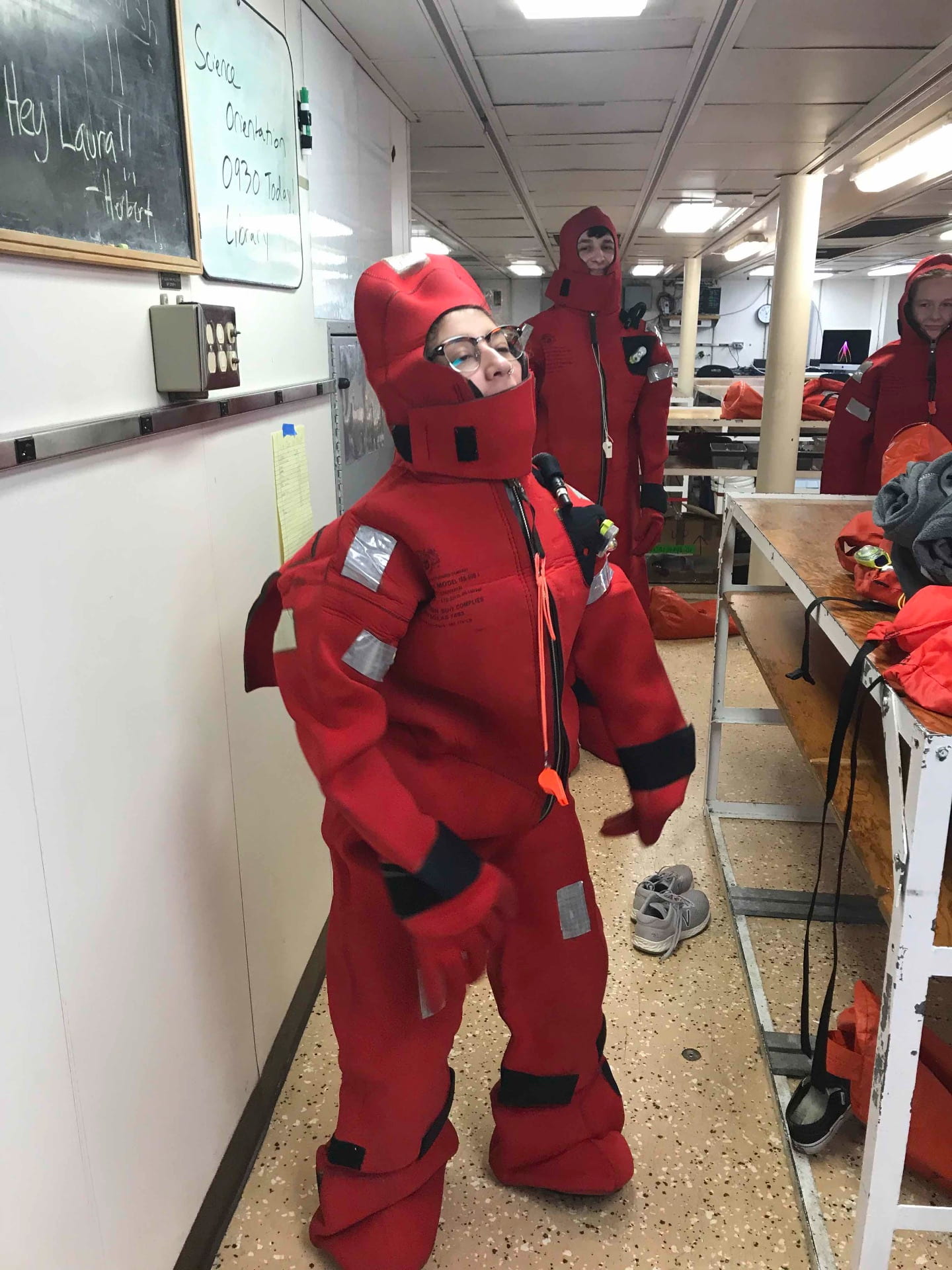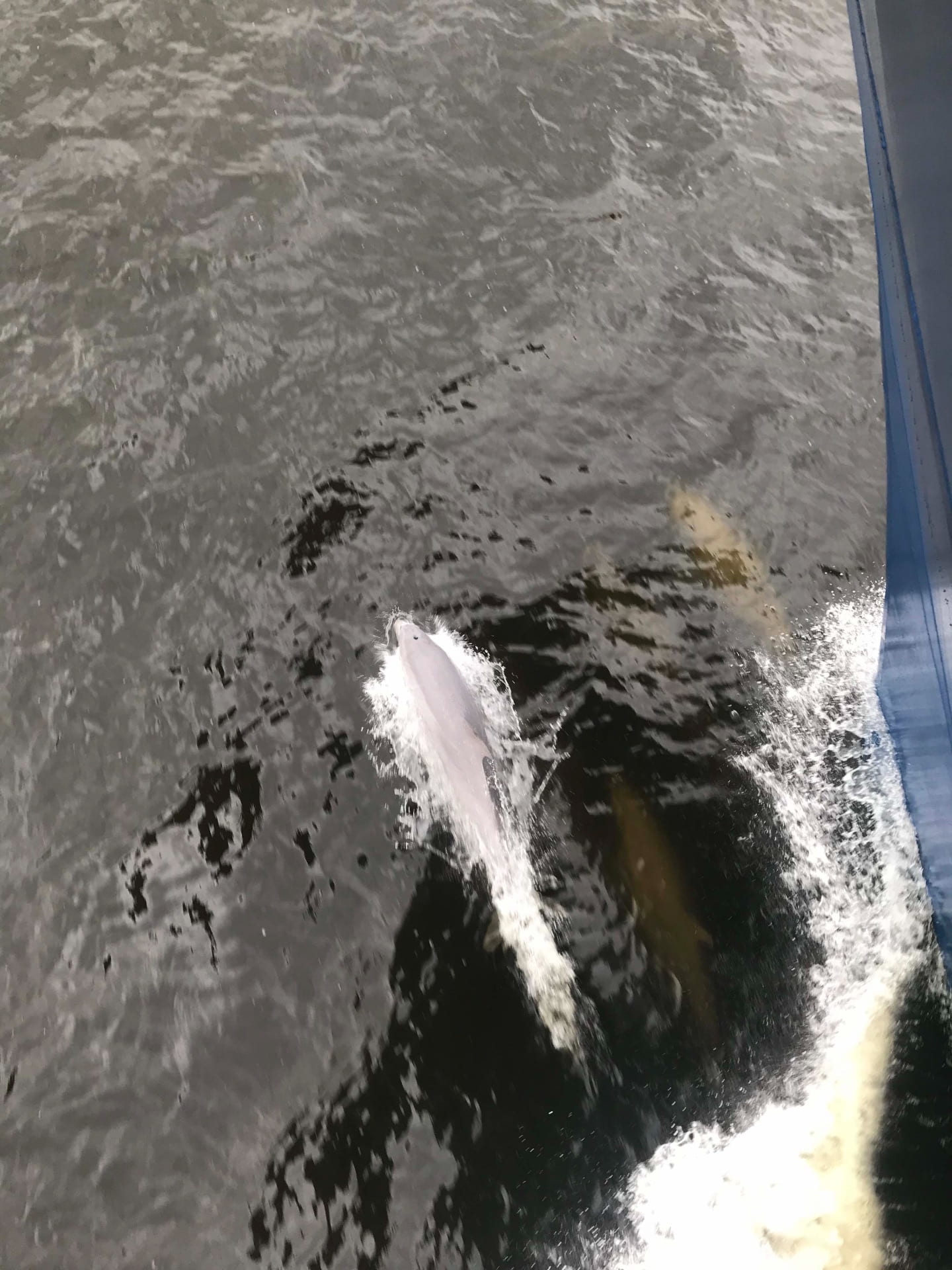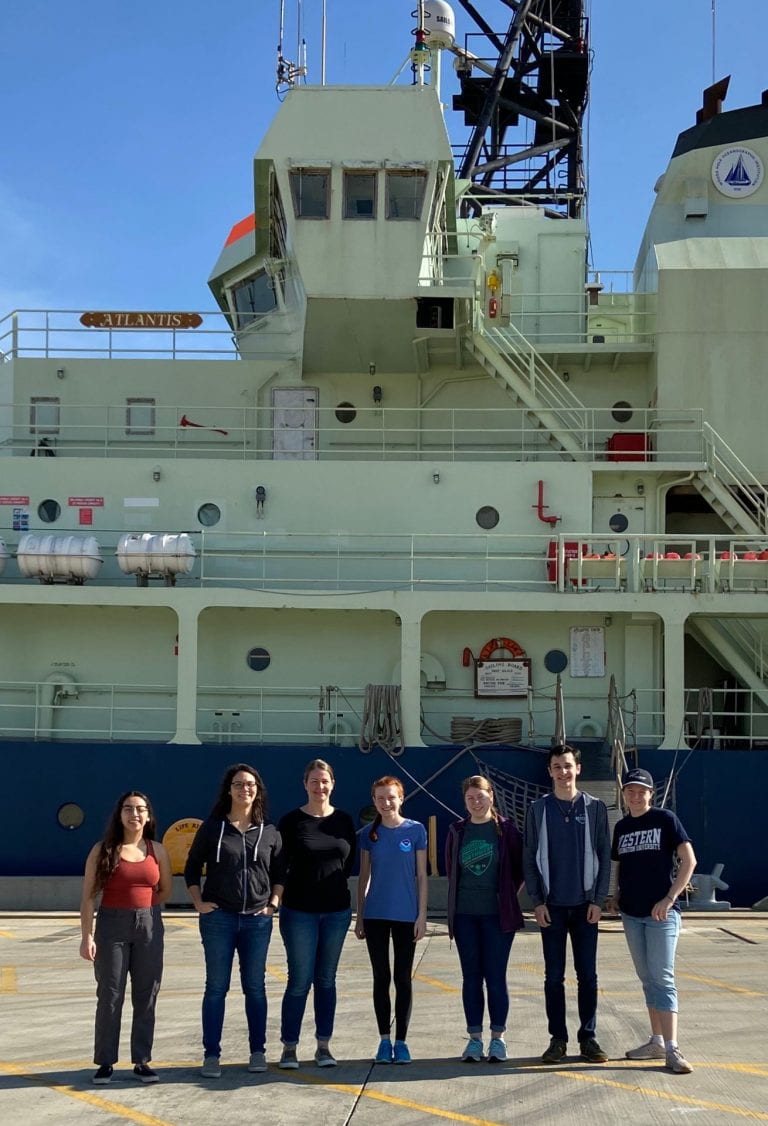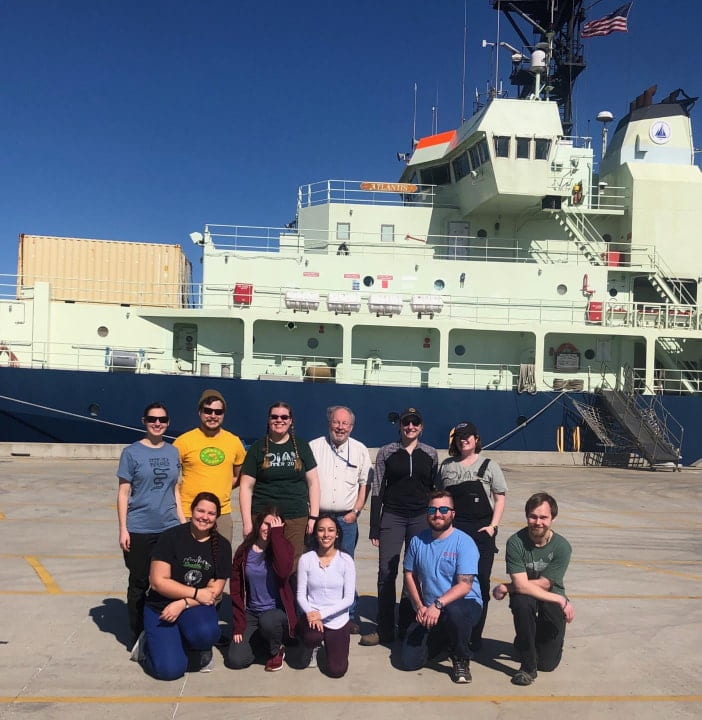
The day began like many others aboard the R/V Atlantis. Sunrise over some wonderfully calm and majestic blue waters here in the Gulf of Mexico. Breakfast was delicious, rather I should clarify that all of the meals on the ship have been superb, and we are not going hungry. I did have to forgo the coffee with my morning meal, as I was a about to embark on a multiple hour excursion down to about 550 meters in a titanium sphere. This would be my first Alvin dive and I was very much looking forward to it.
After Breakfast we loaded up into the command module of the sub and the crew took over. The Alvin operations crew is a well-oiled machine and got us in the water in a seemingly short amount of time. When we started our descent it only took us about 20 minutes to reach the bottom of the Gulf and a depth of about 530 meters.
We drove around for a minute or two while the pilot got the trim and ballast right and then we headed for the sample site GC 234 (Green Canyon). Dr. Shawn Arellano was on the port side and I was on the starboard side. I used the time that we were driving to the site to get acquainted with the camera system that I would be in charge of. The site had tube worm fields as far as the eye can see. We drove around the cluster of worms looking for a suitable site to deploy some experiments for a colleague working on settlement of a different worm that lives on the shells of clams that lives on the tops of female tubeworms. When a suitable location was found, the pilot maneuvered Alvin’s left arm and grabbed the PVC structures out of the basket and placed them on the sea floor next to a worm bush.
We then drove away from the primary worm bush to look for other sample sites. We were tasked with filming all samples before collection and had to collect some tubeworms with particular sponges on them, brittle stars on soft fan corals, and many samples of carbonate rock. We then happened upon another large collection of tube worms and this one had some of the clams that we were seeking, so we spent some time collecting as many clams as we could. It was in this area with the clams that we were able to find a small aggregation of the mussels on the sea floor that we have been seeking throughout the cruise and collected some of them, but a much smaller number since they were not prevalent.
During the sampling event we came across some large gigantic isopods rummaging around for food on the sea floor. We also saw various fishes and crabs among the large tubeworm bushes. One of the more interesting things we saw was an interesting salp (potentially) that looked like a floating bag but we saw it pumping around the sediment, which is uncharacteristic of salps.
After all of our tasks were accomplished and some fun was had, we dropped our weights and the sub began its ascent from the depths of the Gulf. The Alvin operations crew again did their jobs swimmingly and had us back on deck in a matter of minutes and just in time for dinner. Life for the science crew on the R/V Atlantis is centered around meal times and Alvin dives. When the sub is below gathering samples, we are hard at work sorting and organizing the samples from previous dives. When the sub comes on deck we all spring into action and sort through the fresh biological samples and assist colleagues with any and all tasks that are required of us. This research cruise has been an incredible opportunity to glimpse the life forms that live in the deep ocean.











